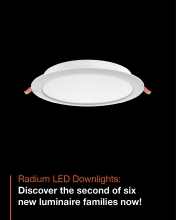Where can we save energy?
In our modern world, energy is needed for almost any activity: mobility, for example, means driving a car; communication means talking on the phone or sending emails, an everyday life without central heating, fridge, washing machine or electric light would be unthinkable.
If we seriously want to avoid to the most fatal consequences of global warming we will have to save energy in all fields, conserve resources and decrease the emmission of green house gases*. There are many possibilities to save but the expenses for realising them may be very different.
*regulated within Kyoto protocol: CO2, Methan (CH4), laughing gas (N2O), CFC, sulphurhexafluoride (SF6); also water vapour
Energy for light

For light, about 19% of the generated current is used all over the world, that amounts to about 2.35% consumption of primary energy, in numbers about 2700TWh/a (= 2,700,000,000,000 kWh per year!).
These high figures arise from the fact that incandescent lamps are responsible for about 40% of the energy consumption. But they do generate only 9% of the electric light!
That is why especially in the field of lighting, by modernising old installations and by employment of up-to-date technology quite simple and quick vast energy savings could be realised. According to ZVEI (association of German electrical industry), just in Germany saving 11 billion kWh would be possible (brochure „Energie-Effizienz ist unsere Sache“), other sources talk about more than 20 billion kWh (LiTG = society of lighting technology). The savings potential can be summed up from the sectors home lighting, office lighting, industrial lighting and street lighting.
Saving energy with lighting
Retrofit as well as modernising is economic, lower energy costs will make some profit for the operator.
But it has not happened, yet, due to various obstacles:
- Often, the deciders or the users do not know about any saving potential.
- Return on investment takes a long time.
- Those who pay for the costs do not reap the harvest.
Thus, it is confirmed by a McKinsey study called "Kosten und Potenziale der Vermeidung von Treibhausgasemissionen in Deutschland“ (costs and potentials of avoiding greenhouse gas emissions in Germany, autumn 2007).
Should the renovation of installations not be required and promoted by external stimulation it could take quite a while until measures will be planned and realised, if at all. '30 percent of all roads in Germany and Europe are still equipped with old, ineffienct technology from the 60s. If the usual changing rate of about three percent per year should be kept, it would take about 30 years - a whole generation - until it is completely renewed once.' (ZVEI publication „Energie-Effizienz ist unsere Sache“). This 'external stimulation' is now provided by laws and European directives as the market could not fulfil the expectations in time.


